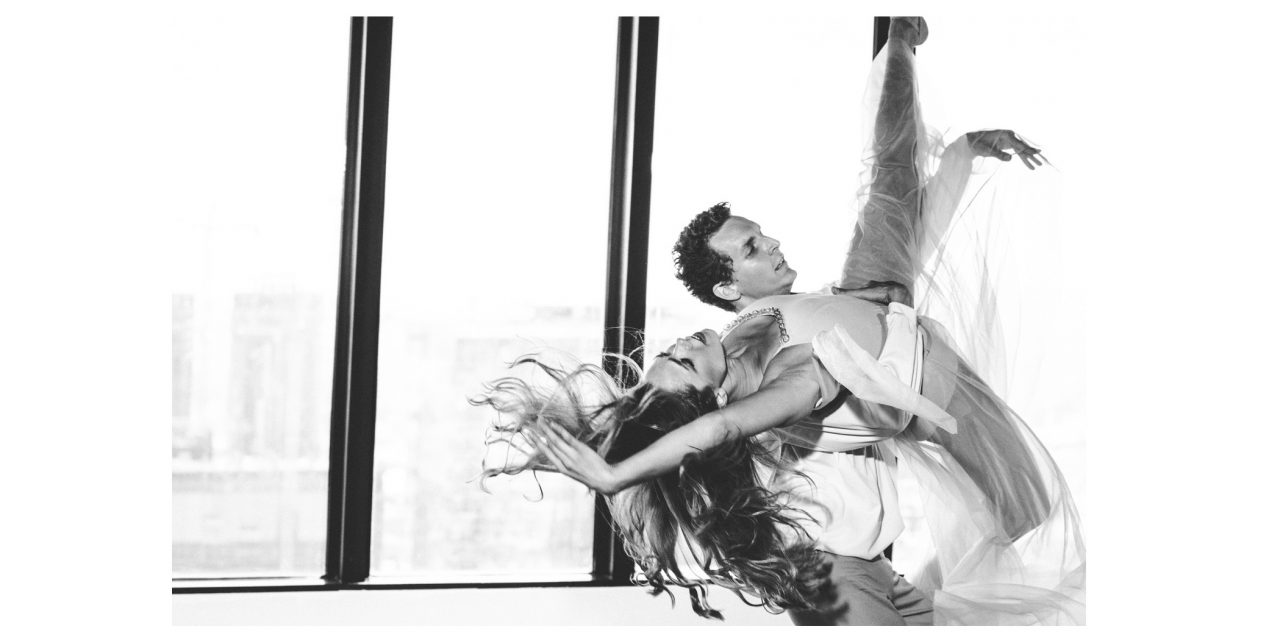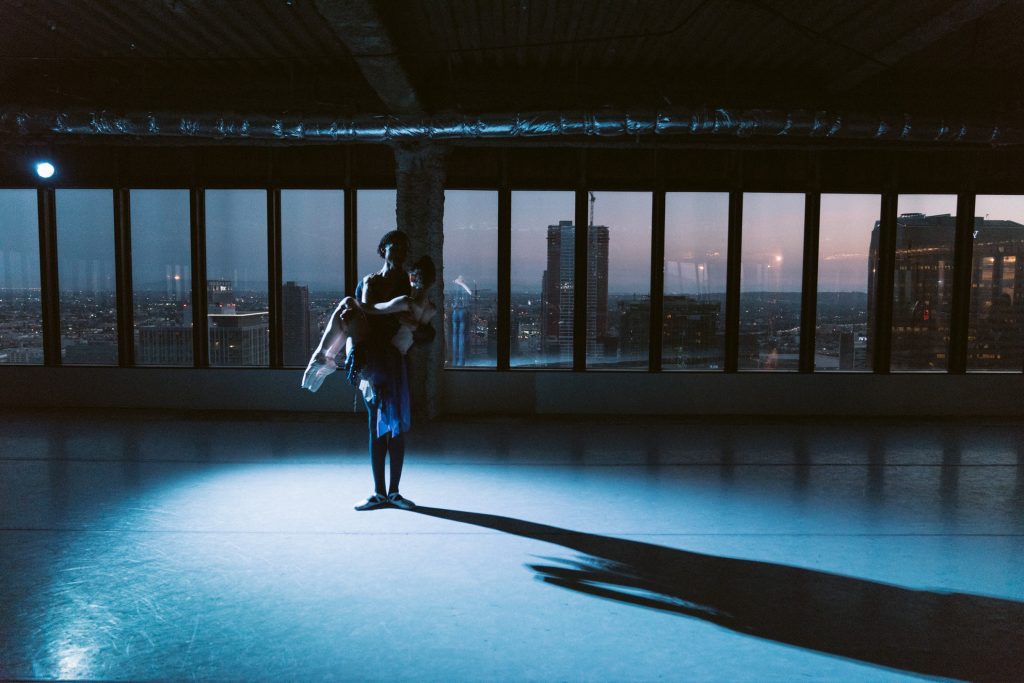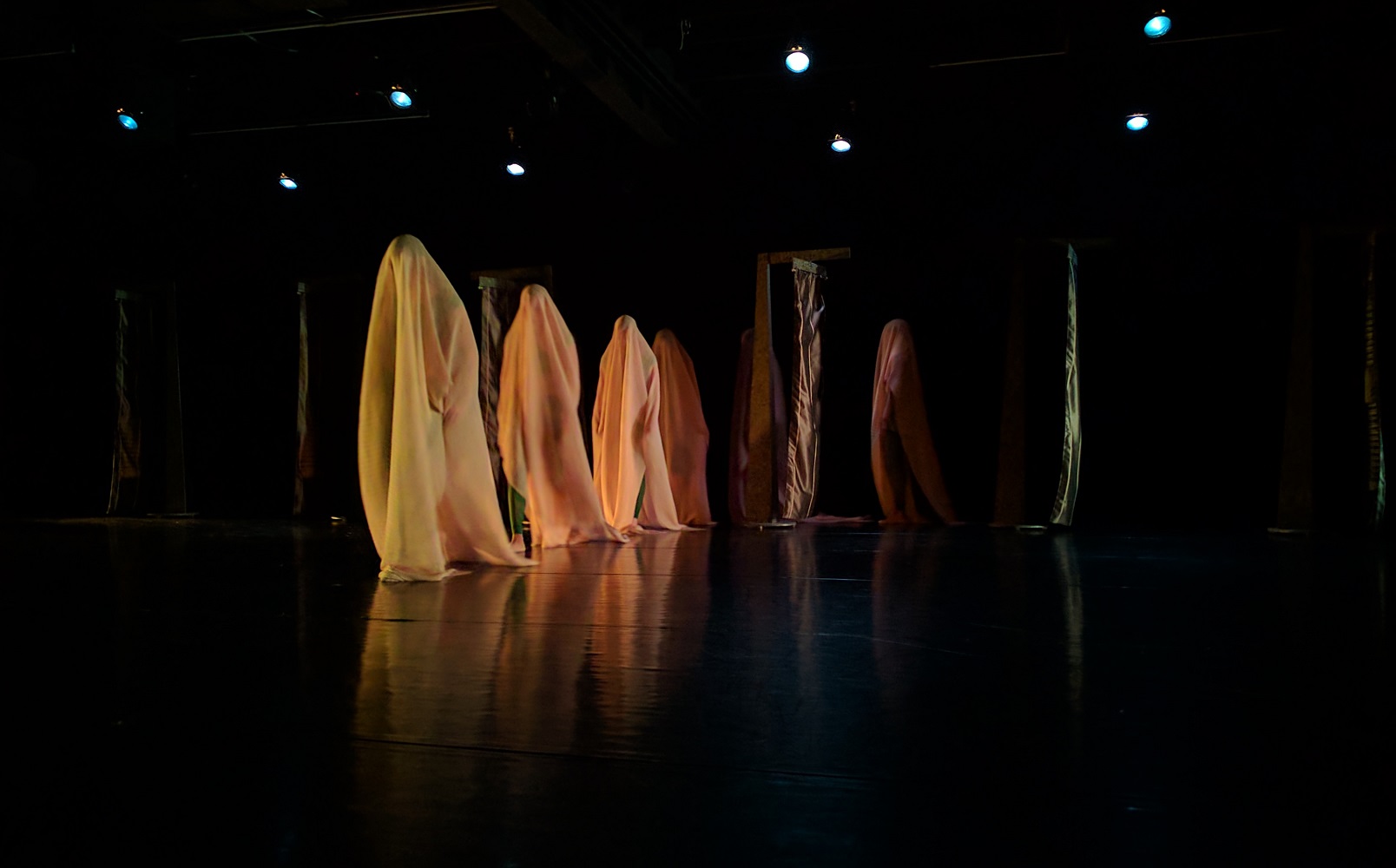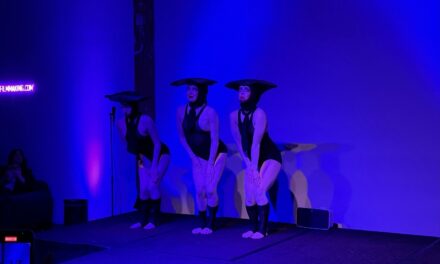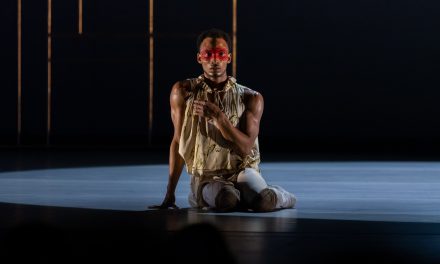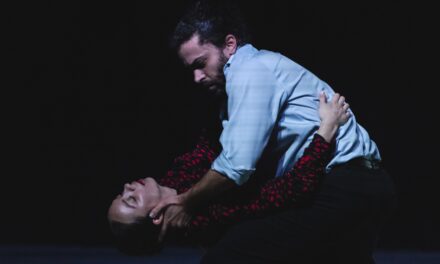American Contemporary Ballet premiered Death and the Maiden last night (Aug.1st) at the beautiful California Market Center building in downtown LA. Entering the Fashion Theater within, you are immediately swept into the moodiness of the space by a pianist playing cool classical piano in the corner. Dominating the room is a large black performance area with two high platforms set at the back of the stage for the elegant string quartet. Chairs surround the stage on three sides and tall Mylar mirrors create wings and kaleidoscopic effects off to the sides.
The lights dim the string Quartet takes their seats. Soprano, Anastasia Malliares accompanied on piano by Alin Melik-Adamyan, enters quietly center stage and sings with heartbreaking angst what we can only assume is a lament to Death. Destitute and in ill health Franz Shubert wrote his String Quartet No. 14 in D Minor perhaps as an ode to his own impending demise at the age of 31.
The music is seductive and it is with anticipation that we await the ballet, an allegorical tale of Death stealing a bride from her lover.
Dressed in black, “Death” danced by Rochelle Chang enters with what appears to be her four minions Hannah Barr, Cierra Flood, Sarah Young, and Michelle DeAngelis. This is when the ambience begins to fade.
Unfortunately the choreography by company founder Lincoln Jones is beyond the capability of his dancers. This is a fundamental mistake made often when a choreographer is more interested in showing off his step repertoire than he is in showing his dancers in the best light. This would have been possible if he had concentrated on the story instead of filling each and every note of music with footwork. This is a ballet rooted in folklore, which, reverberates today, as death will win out, a fascinating premise for a ballet. Yet, the story is indecipherable.
The Maiden, Elise Filo and her Lover, Mate Szentes dance together in a standard pas de duex that they execute well but with no trace of chemistry between the two. Neither the choreographer nor the dancers seem to understand that this is an adagio meant to depict not only their undying love but also, and maybe more importantly, their sensual connection. Nothing indicated that they were anything more than rehearsal partners.
A great deal of insecurity filled the floor as the dancers struggled through one over choreographed section to another. Many of the ballerinas did not reach full point when they should, and arabesques and jumps were low mostly due to rushing toward the next variation.
When the Maiden is carried out and placed on a series of small acrylic tables in a somnambulant state, we do not know if she is sleeping or dead. “Death” enters and walks in as if stalking her. However, she then breaks off into a well performed solo and ignores the Maiden completely leaving the stage without a backward look. This also holds true for the Lover who hardly seems aware of her presence. No mourning, no yearning no emotion other than a strained look of determination. When the Maiden awakens there is no joy, just more steps.
The final section “Presto” is a frantic piece based on the idea of dancing to death. Here the full corps de ballet, a larger group than previously seen, is dressed in red. Jones has pulled out all the stops and every combination is fast and furious. The dancers work relentlessly to fulfill his idea but it is a technical challenge for most. He does achieve a certain amount of frantic energy so that there is visceral relief as it comes to an end but no insight to the story.
Ably handling the music were Alexandros Petrin 1st. violin, Ani Bukujian 2nd violin, Dmitri Yevstifeev viola and Keith Williams cello, who were up to every challenge and played Shubert’s great work with sensitivity and vigor throughout.
At the Q and A after the show Lincoln Jones stated he was inspired by the music and the idea that “death can come at anytime, remember you are going to die.” And he added that he wanted his work to “reflect the weight of the subject matter.” Unfortunately it did not.
Death and the Maiden runs weekends through August 11th. For information and tickets, click here.
Written by Tam Warner for LA Dance Chronicle, August 5, 2019
Featured image: American Contemporary Ballet – Elegie – Photo courtesy of the company.

